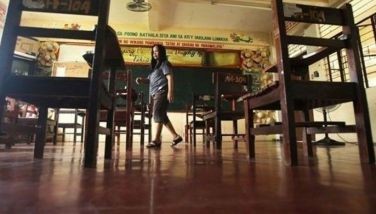Understanding U-turn slots
In our previous column, we asked, "which is better, a rotunda or a signalized intersection?" Let's examine both. When two 2-lane roads cross each other, a car going into the intersection has 3 possible movements - go straight, turn right, or turn left. That's 12 possible movements (or "cycles" in traffic signal terms). No problem with turning right. It's the "thru" traffic and turning left which cause vehicles to be in collision course with others. If you draw that on paper, you'll get a definite number of what we call "conflict points." These causes the traffic congestion in intersections, unless "regulated."
What's the first reaction? The easiest way to smoothen traffic is simply to prohibit left-turns. But that's not really a good idea if you are going in that direction, isn't it? No problem if you're in a remote country road or a small town where people respectfully just take turns using the space. But if you do that in EDSA you'll get an instant humongous traffic gridlock. Government comes in and puts a traffic signaling system so that drivers follow and take turns. Or we build a rotunda, which is not so popular in the Philippines.
Using cyclic traffic signals causes the stop and go movement in intersections, which in turn induces wave theory effects discussed in the last column. A rotunda eliminates this by introducing continuous circular traffic. You enter a rotunda, go with the flow and exit to your chosen direction. The conflicts are eliminated (minimized actually) by allowing weaving or changing of lanes. The urban planning constraint here is really that it needs so much space as you may have readily noticed in Fuente Osmeña and Quezon Memorial Circle. And, in an already built-up area, this may be next to impossible to implement.
Mr. Bayani "BF" Fernando came up with a "brilliant" idea. Instead of signalized intersection, he introduced hundreds of U-turn slots all over Metro Manila. Not actually an original one, as these are called "simulated roundabouts" in transportation science, or the "Michigan Left" in the U.S. I have no idea whether BF copied this from Michigan or thought of it himself. But basically the idea is the same - allow traffic in one direction only and put U-turn slots farther up and down that direction. Prohibit left-turns and allow right turns only. It's basically an elongated rectangular rotunda with sharp corners. Only this time, the rotunda is not round.
Which is better - signalized intersections or simulated rotundas using U-turn slots. In a technical paper written by our colleague, Rene S. Santiago in 2004, he postulated,"Take a journey from point A to point B. One route offers an average speed of 18kph, no waiting, but over a distance of 700 meters. A second route offers a travel speed of 5 kph plus 1.5 minutes of waiting time, over a shorter distance of 50 meters. Which one will a motorist rate as faster? In most cases, he will choose the first. Paradoxical as it may seem, the first option will clock 140 seconds while the second one will take 126 seconds. One gives a faster travel speed than the other, but takes longer."
Perception vs. reality. Most people will take a longer route for as long as they are moving rather than a faster one which includes waiting ("forever," many will say) for the traffic light to change. They'll rather travel 0.7 km. more (350 meters to and back) to return to the same place where they originally were "for as long as traffic is moving." The longer time means there are more vehicles competing for scarce congested road space. This is especially true if one direction is a main corridor like Ban-Tal. More travel time means more congestion, more pollution, more GHG emissions, and more losses to the economy.
Another article entitled "Modeling U-turn traffic flow" by Jay Samuel L. Combinido and May T. Lim published at the National Institute of Physics of UP-Diliman, summarized that the Modified U-turn's "effectiveness is limited to low car inflow and minimal (and equally probable) lane changing maneuvers. After the transition to congested flow, the median U-turn scheme will eventually fail because the congestion that forms will soon extend backwards: at which point, they effectively clog up the turning lanes in the opposite traffic direction."
What these two papers suggest is, that the U-turn slots at Ban-Tal may be effective only for intersections and times when congestion is low. At higher vehicle-capacity ratios with lower level of service, it will fail and worsen traffic congestion. That's why you have mixed reactions from stakeholders. And both sides were correct. Yet, the irony of it all is the fact that we need the solutions during the time when congestion is at the highest (like the morning and afternoon peaks). Unfortunately, these are the conditions when the U-turn slots will fail.
- Latest






















